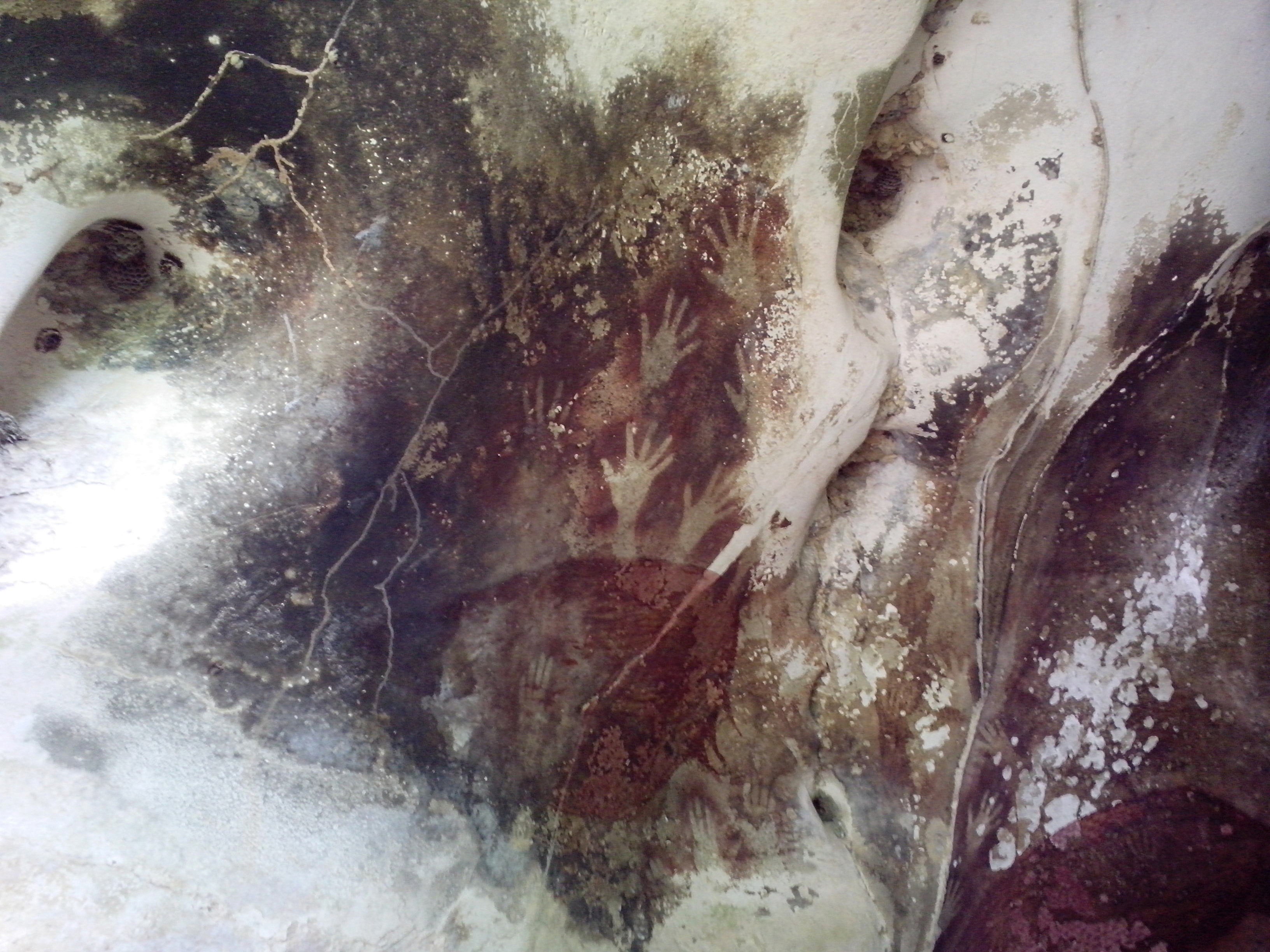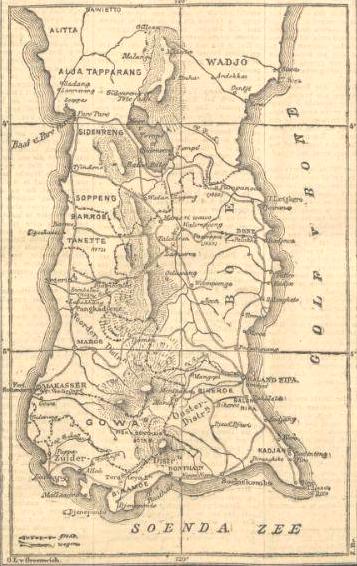South Peninsula, Sulawesi on:
[Wikipedia]
[Google]
[Amazon]
The South Peninsula is one of the four principal peninsulas on the island of
 South Peninsula was first inhabited by humans about 30,000 years ago. The archaeological remains of the earliest inhabitants were discovered in caves near limestone hills around
South Peninsula was first inhabited by humans about 30,000 years ago. The archaeological remains of the earliest inhabitants were discovered in caves near limestone hills around  During the golden era of the spice trade, from the 15th to 19th centuries, South Sulawesi served as the gateway to the Maluku Islands.
At around the 14th century in South Sulawesi there were a number of small kingdoms, including two prominent ones, the Kingdom of Gowa near Makassar and the Bugis kingdom located in Bone. In 1530, the kingdom of Gowa began development and in the mid 16th century, Gowa become one of the most important trade centers in eastern Indonesia. In 1605, the King of Gowa embraced Islam and made the kingdom of Gowa Islamist and between the years 1608 and 1611, the Kingdom of Gowa conquered the kingdom of Bugis so that Islam could be spread to the regions of Makassar and Bone.
During the golden era of the spice trade, from the 15th to 19th centuries, South Sulawesi served as the gateway to the Maluku Islands.
At around the 14th century in South Sulawesi there were a number of small kingdoms, including two prominent ones, the Kingdom of Gowa near Makassar and the Bugis kingdom located in Bone. In 1530, the kingdom of Gowa began development and in the mid 16th century, Gowa become one of the most important trade centers in eastern Indonesia. In 1605, the King of Gowa embraced Islam and made the kingdom of Gowa Islamist and between the years 1608 and 1611, the Kingdom of Gowa conquered the kingdom of Bugis so that Islam could be spread to the regions of Makassar and Bone.
Sulawesi
Sulawesi (), also known as Celebes (), is an island in Indonesia. One of the four Greater Sunda Islands, and the world's eleventh-largest island, it is situated east of Borneo, west of the Maluku Islands, and south of Mindanao and the Sulu ...
, stretching south from the central part of the island. It is part of the province of South Sulawesi
South Sulawesi ( id, Sulawesi Selatan) is a province in the southern peninsula of Sulawesi. The Selayar Islands archipelago to the south of Sulawesi is also part of the province. The capital is Makassar. The province is bordered by Central Sul ...
. The southern peninsula is the most densely populated peninsula in Sulawesi; over 45% of the population of Sulawesi (or 8.8 million people) are on the southern peninsula. Inhabited by an Austronesian people who came thousands of years ago. The largest ethnic group in Sulawesi is the Bugis
The Bugis people (pronounced ), also known as Buginese, are an ethnicity—the most numerous of the three major linguistic and ethnic groups of South Sulawesi (the others being Makassar and Toraja), in the south-western province of Sulawesi ...
, followed by Makassar
Makassar (, mak, ᨆᨀᨔᨑ, Mangkasara’, ) is the capital of the Indonesian province of South Sulawesi. It is the largest city in the region of Eastern Indonesia and the country's fifth-largest urban center after Jakarta, Surabaya, Meda ...
and Toraja.
Mount Lompobattang lies near the southern tip of this peninsula. and the latimojong mountain is the highest mountain in the southern peninsula of sulawesi and on the island of sulawesi.
History
 South Peninsula was first inhabited by humans about 30,000 years ago. The archaeological remains of the earliest inhabitants were discovered in caves near limestone hills around
South Peninsula was first inhabited by humans about 30,000 years ago. The archaeological remains of the earliest inhabitants were discovered in caves near limestone hills around Maros
Maros is a town in the South Sulawesi province of Indonesia close to the provincial capital of Makassar. It is the capital of the Maros Regency.
Maros is the location of the Indonesian Cereals Research Institute, a branch of the Indonesian A ...
, about 30 km northeast of Makassar
Makassar (, mak, ᨆᨀᨔᨑ, Mangkasara’, ) is the capital of the Indonesian province of South Sulawesi. It is the largest city in the region of Eastern Indonesia and the country's fifth-largest urban center after Jakarta, Surabaya, Meda ...
, the capital of the South Sulawesi
South Sulawesi ( id, Sulawesi Selatan) is a province in the southern peninsula of Sulawesi. The Selayar Islands archipelago to the south of Sulawesi is also part of the province. The capital is Makassar. The province is bordered by Central Sul ...
province. Pebble and flake stone tools have been collected from the river terraces in the valley of Walanae
Walanae River is a river in South Sulawesi on the island of Sulawesi, Indonesia, about 1500 km northeast of the capital Jakarta.Soppeng
Soppeng Regency is a landlocked regency in South Sulawesi province of Indonesia. Soppeng Regency has its seat of government (capital) in the town of Watansoppeng, located 180 km from Makassar. The regency covers an area of 1,557 km2, and ...
and Sengkang, including the bones from giant pig and elephant species that are now extinct. Hand print paintings, estimated to be around 35,000 to 40,000 years old, have been found in the Pettakere cave
The caves in the Maros-Pangkep karst are situated in South Sulawesi, Indonesia, and contain paintings from the Paleolithic considered to be the earliest figurative art in the world, dated to at least 43,900 years ago.
Description
The caves in t ...
, located from the town of Maros
Maros is a town in the South Sulawesi province of Indonesia close to the provincial capital of Makassar. It is the capital of the Maros Regency.
Maros is the location of the Indonesian Cereals Research Institute, a branch of the Indonesian A ...
and from Makassar.
 During the golden era of the spice trade, from the 15th to 19th centuries, South Sulawesi served as the gateway to the Maluku Islands.
At around the 14th century in South Sulawesi there were a number of small kingdoms, including two prominent ones, the Kingdom of Gowa near Makassar and the Bugis kingdom located in Bone. In 1530, the kingdom of Gowa began development and in the mid 16th century, Gowa become one of the most important trade centers in eastern Indonesia. In 1605, the King of Gowa embraced Islam and made the kingdom of Gowa Islamist and between the years 1608 and 1611, the Kingdom of Gowa conquered the kingdom of Bugis so that Islam could be spread to the regions of Makassar and Bone.
During the golden era of the spice trade, from the 15th to 19th centuries, South Sulawesi served as the gateway to the Maluku Islands.
At around the 14th century in South Sulawesi there were a number of small kingdoms, including two prominent ones, the Kingdom of Gowa near Makassar and the Bugis kingdom located in Bone. In 1530, the kingdom of Gowa began development and in the mid 16th century, Gowa become one of the most important trade centers in eastern Indonesia. In 1605, the King of Gowa embraced Islam and made the kingdom of Gowa Islamist and between the years 1608 and 1611, the Kingdom of Gowa conquered the kingdom of Bugis so that Islam could be spread to the regions of Makassar and Bone.
References
Peninsulas of Sulawesi Landforms of South Sulawesi {{SSulawesi-geo-stub